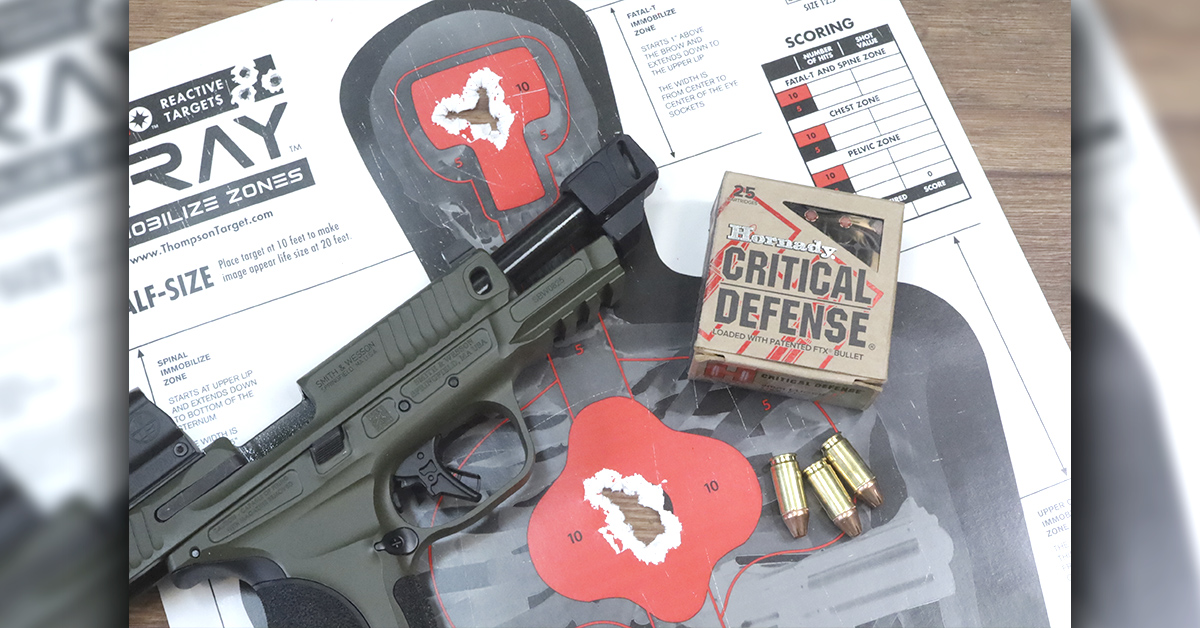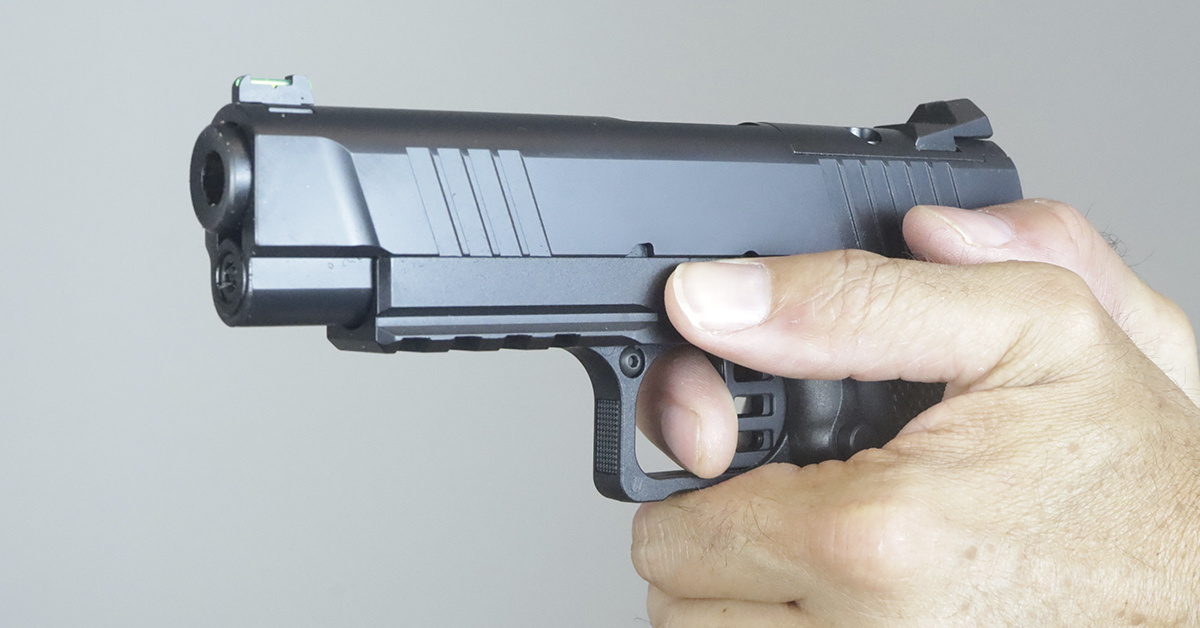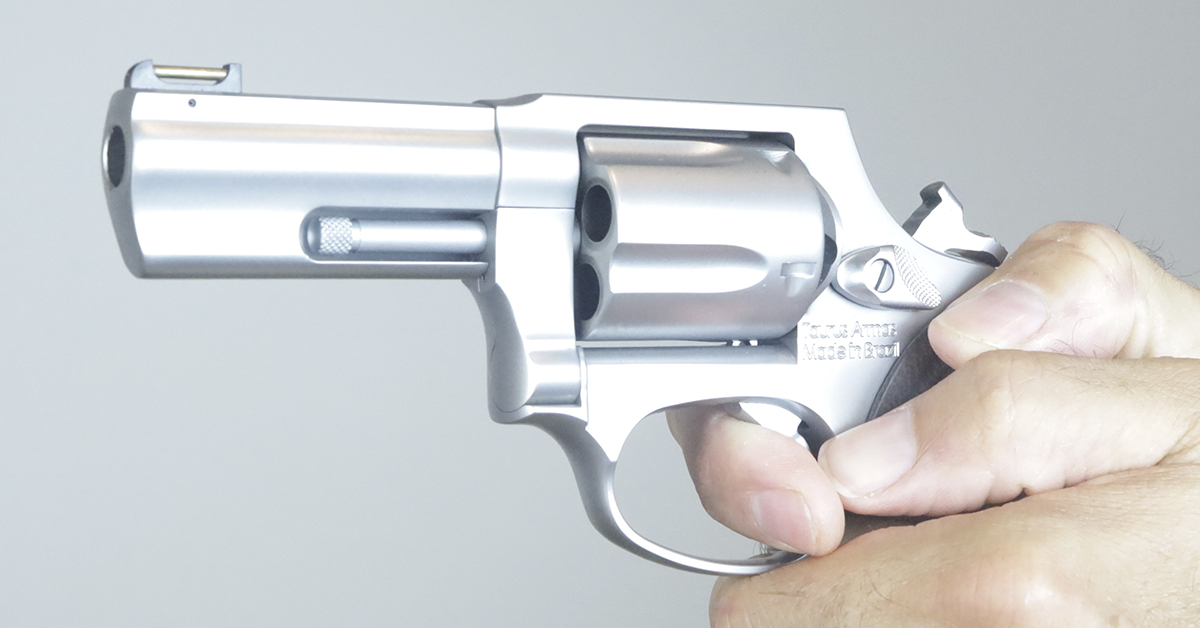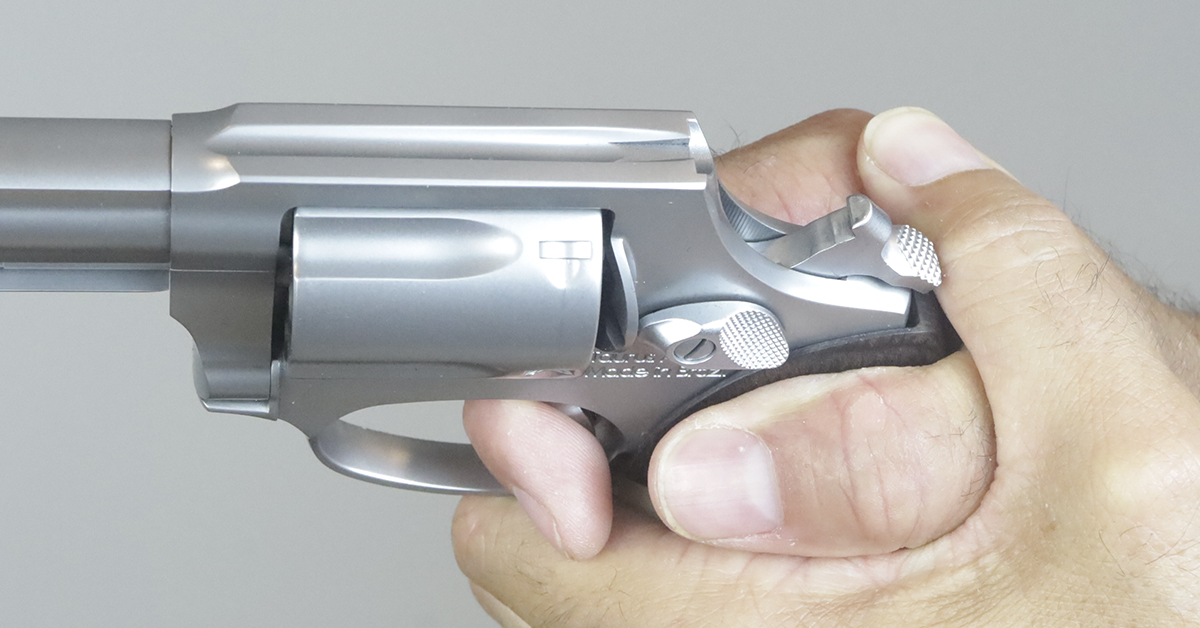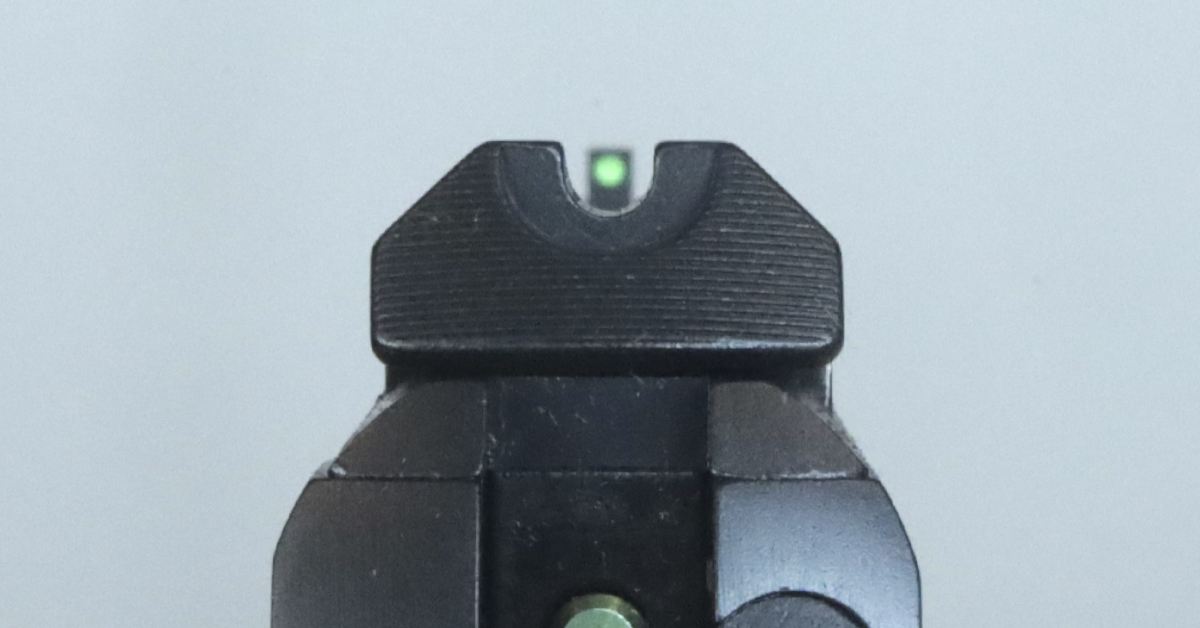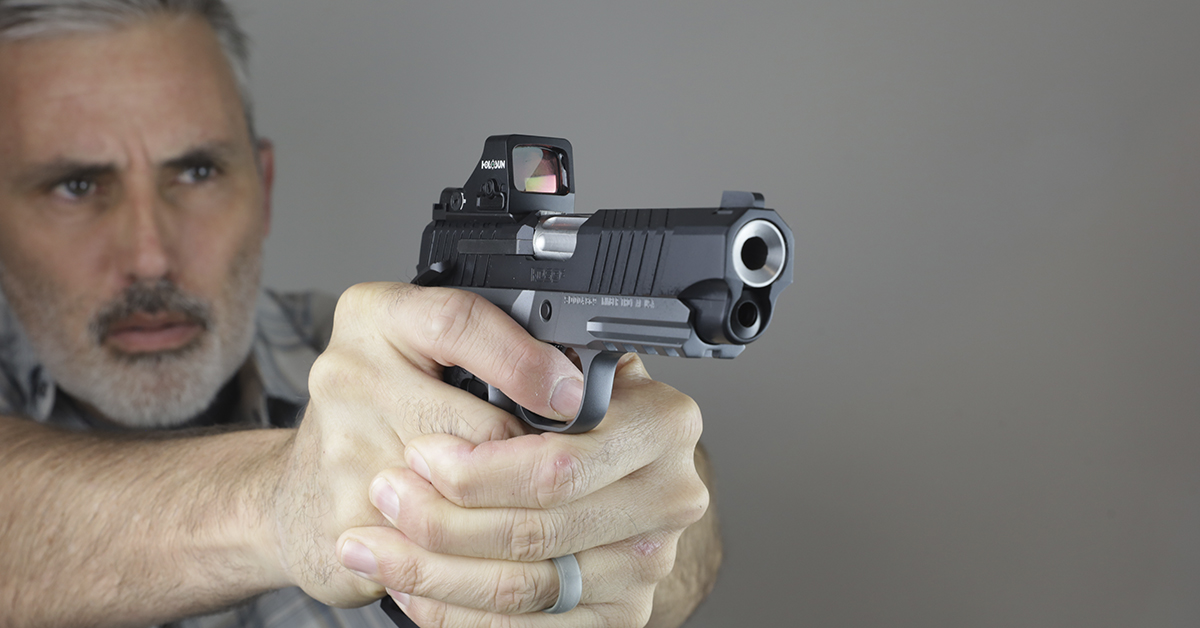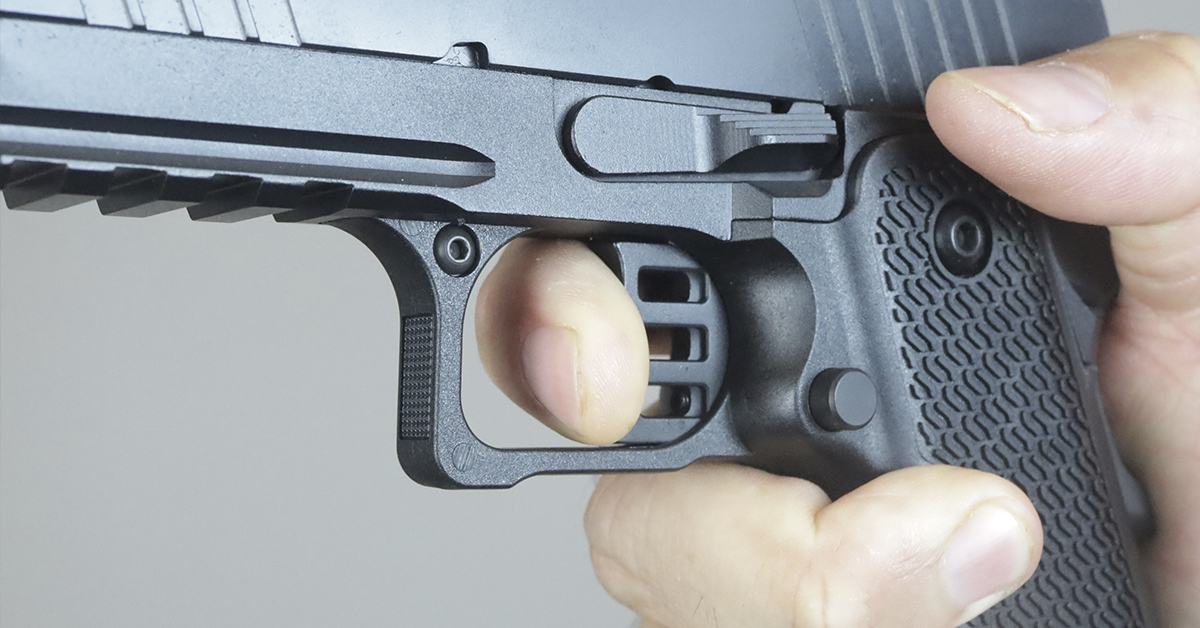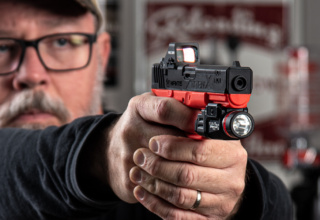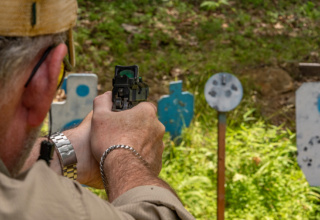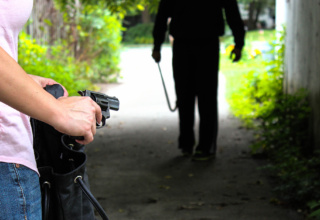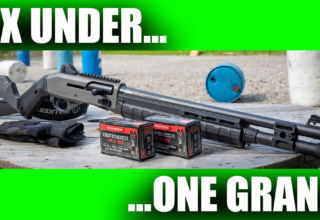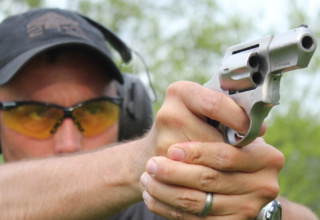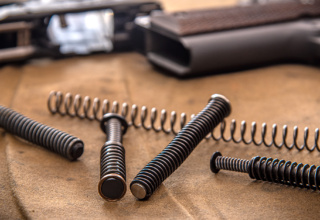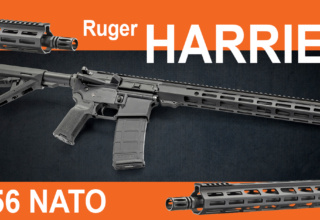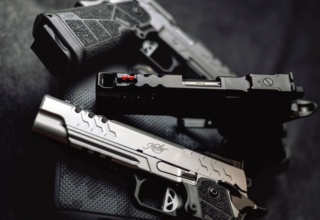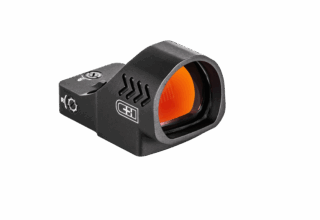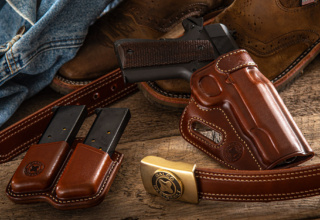If you aren’t shooting a handgun as well as you’d like, go back to basics and examine these three critical components of accuracy
Brad Fitzpatrick
While I was in college, I shot on my university’s club trap and skeet team, and while we practiced often and shot pretty well, almost everyone on the squad went through slumps. An adept competitive shooter would suddenly start missing, and the cumulative effect of those misses (and the distraction of fearing you’ll miss again) sometimes snowballed into a full-blown shooting slump. The solution, I learned from our shooting coach, was to return to the three fundamentals of shotgun shooting: gun mount, swing, and trigger press. One of those three simple tasks was at fault, he said, for about 90% of misses.
It’s been quite some time since I shot competitive shotgun competitions (or was in college). I shoot far more pistol competitions today, but I’ve learned that the two disciplines aren’t that different. Every pistol shooter is prone to shooting slumps, and the prescription to fix those problems is almost always a return to handgun basics.
The Three Key Tenets of Accurate Handgun Shooting
Just as with shotgunning, there are three primary keys to accurate pistol shooting. For handguns, those are grip, sight picture, and trigger press. And, just as with shotguns, mastering these fundamentals will help make you a better shooter.
Perhaps “mastering” isn’t the correct term, though, since you’ll always need to return to and refine these basic skills. But this focus on foundational shooting will help new shooters learn the keys quickly, and advanced shooters can always return to these tenets when they notice that their performance is slipping.
Grip (and Stance)
I’m sort of cheating here by referring to the first fundamental of accurate pistol shooting as “grip” when, realistically, we’re combining the elements of both grip and stance. A solid stance, though, is the foundation of a good grip, so the two elements are closely tied together.
Let’s begin with stance. Make sure your feet are planted shoulder-width apart with your toes pointed at the target. Your weight primarily rests on the forefoot and the knees are bent. Lean slightly forward from the hips. This aggressive stance allows you to handle recoil and balance the firearm more effectively, and it may be unnatural for new shooters who have a natural tendency to lean away from the gun in anticipation of the shot. You don’t need to be overly aggressive, either, leaning so far toward the target that you’re unbalanced and unable to move.
When your stance is correct, proper grip will come more naturally. Position your hand high on the grip to improve control and mitigate recoil.
The most popular semi-auto pistol grip involves a two-thumbs forward hold, where both thumbs are pointed at the target on the left side of the frame (for right-handed shooters). Some pistols offer a “dead pedal” or some other machined part on the left side of the gun upon which to rest the forward thumb of your support hand. Resist the temptation to allow your forward-facing thumbs to ride on the slide since this can slow slide movement and cause cycling issues.
Things change slightly when shooting a revolver.
I personally prefer the “tucked” thumb position for my non-shooting hand where, instead of riding forward as with a semiauto pistol, the thumb tucks down beside the frame of the pistol.
You can also cross your thumbs, placing your support hand thumb over your firing hand thumb. Be certain that the support thumb is well away from the hammer.
Sight Alignment
Sight alignment can be difficult for new shooters to understand, and even experienced shooters get lazy when it comes to sight alignment, leading to misses. Traditionally, pistols have iron sights, usually a notch or U-shaped rear sight that aligns with the front sight.
For accurate shooting, the shooter focuses primarily on the front sight and aligns the front sight so it is in the center of the rear notch/U-dot and the top of the front sight is aligned with the tops of the notches. With the sights aligned in this manner, the front notch is placed just below the desired point of impact at defensive distances. That can be complicated, especially for new shooters. Focusing on the front sight, obtaining proper sight alignment, and firing is neither a simple nor a fast process for rookies, but with practice, it’s a skill that can be mastered relatively quickly.
Red dots are popular, and they are simpler. A red dot optic allows you to stay target-focused and the large visible red dot serves as your single aiming point. I see experienced shooters struggle as they transition from irons to red dots, but new shooters quickly pick up on red dot optics and are shooting accurately much faster than most do with irons. Red dots are also easier for those with aged eyes to work with, and they make life much simpler for cross-dominant (different strong hand and strong eye) shooters.
Once you’ve learned to develop a sight picture, you must maintain the sight picture and quickly reacquire proper sight alignment after recoil. A good grip will help accomplish this, as will the next fundamental: trigger control.
Trigger Control
If you aren’t pressing the trigger of your pistol straight back in line with the gun, you’re moving the muzzle. That moves the sights, and that shifts point of impact, resulting in a miss. The key is to avoid strangling the trigger. Proper trigger press is applied with the pad in the last digit of the shooting finger (the distal phalange, for medical types). Jerking or yanking the trigger is going to cause accuracy to deteriorate in a hurry.
Not all triggers are created equal, and it’s much harder to master a heavy, uneven, gritty trigger than a smooth one. Part of the reason custom 1911s from Wilson Combat, Nighthawk Custom, and others shoot so well is that they have exceptional single-action triggers that are light and crisp. Some striker-fired pistols have good triggers, and others are very rough. Internal hammer-fired guns from companies like Ruger and Smith & Wesson tend to have smoother triggers, but they’re not as light as a single-action. Double-action revolvers and semi-auto pistols have a heavy first trigger pull that makes them difficult to shoot accurately without adequate strength and practice.
The prescription for improving trigger pull is almost always dry firing, and this can be a valuable tool so long as it’s done safely. For starters, you must make absolutely certain that the gun is unloaded, and there should be no ammunition anywhere in the vicinity. Aiming at a safe backstop (because we treat all guns as loaded), press the trigger rearward. Cycle the slide, if necessary, to recock the pistol and dry fire again. And again. And again. Maintain sight focus as you dry fire and pay attention to the sights. Are they remaining on target or moving? If they’re staying put, you’ve pulled the trigger properly. If they move, then you’re not pressing straight back properly and are instead moving the muzzle of the pistol.
Trigger pull, sight alignment, and grip are some of the earliest skills pistol shooters learn, but even the most advanced competitive shooter can return to these basics when they see accuracy devolve. There are a variety of reasons we miss with a pistol, but before you blame your gun and ammunition, return to the core tenets of accurate shooting and make certain you aren’t getting sloppy.
- PERSONAL DEFENSE: Preparing for the Worst - December 31, 2025
- Six Great Shotguns Under $1,000 (Plus One Shotgun Everyone Should Own) - November 28, 2025
- Eight Great Revolvers for Self-Defense - September 23, 2025

